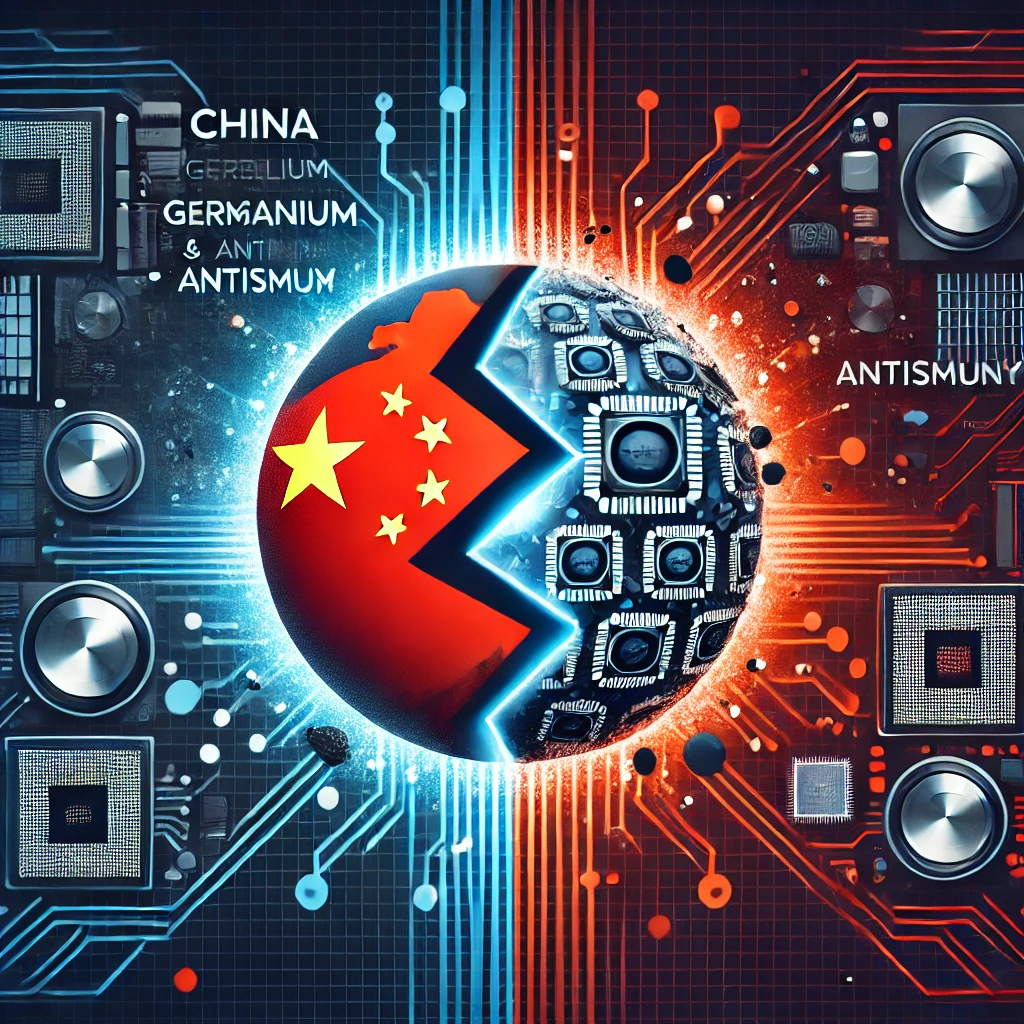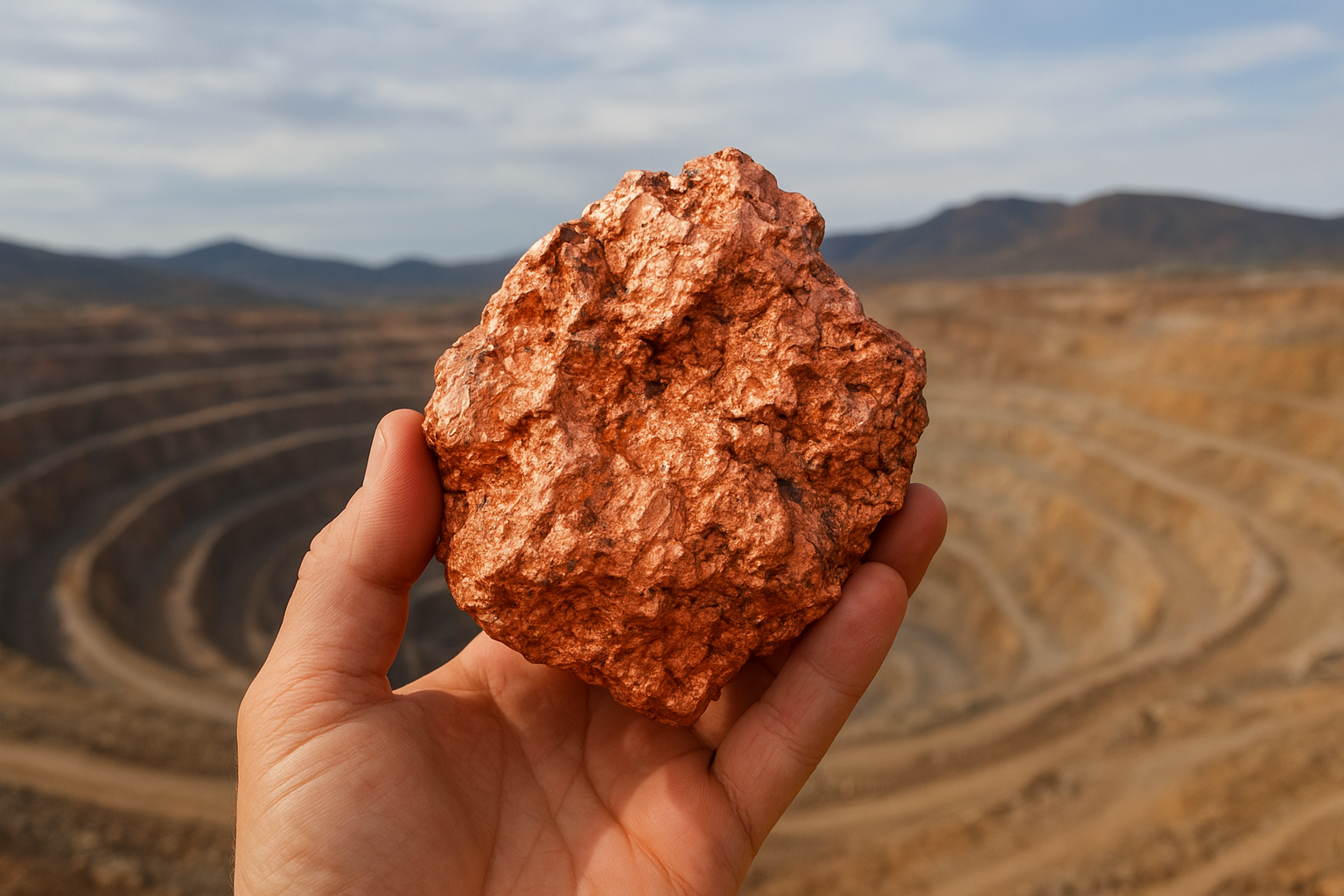The trade tensions between China and the United States have escalated dramatically with China’s recent decision to ban the export of gallium, germanium, and antimony to the U.S. These minerals are critical components in semiconductors, infrared technology, and batteries, making them indispensable to industries like defense, electronics, and clean energy.
As the global economy feels the ripple effects, investors should carefully assess the potential implications of this move on key sectors, companies, and portfolios.
The Strategic Importance of Gallium, Germanium, and Antimony
- Gallium:
- Used in semiconductors, especially for high-performance applications like 5G and military-grade technology.
- Essential for the production of LEDs and solar panels.
- Germanium:
- Powers infrared optics, crucial for military targeting systems and thermal imaging.
- Plays a significant role in fiber optic networks, which are vital for global communications.
- Antimony:
- A critical component in batteries and flame-retardant materials.
- Used in defense applications and emerging technologies like liquid metal batteries.
Why This Move Matters
1. Retaliation to U.S. Sanctions
This ban is a direct response to U.S. sanctions on China’s chip industry. The U.S. has been limiting China’s access to advanced semiconductors and chip-making technology, citing national security concerns. By restricting these minerals, China is leveraging its dominance in the global supply chain as a countermeasure.
2. Impact on Global Supply Chains
China dominates the production of these critical minerals, controlling over 80% of the global supply for gallium and germanium. The ban disrupts the supply chain, leading to potential shortages, price surges, and increased costs for U.S. companies reliant on these materials.
3. Strategic Vulnerabilities
The U.S. and its allies will likely face challenges sourcing these minerals from alternative suppliers. Countries like Canada and Australia could fill some of the gap, but ramping up production will take time, leaving critical industries vulnerable in the short term.
Sectors and Companies at Risk
1. Technology and Semiconductors
- Companies like Intel ($INTC), AMD ($AMD), and NVIDIA ($NVDA) rely heavily on gallium and germanium for chip production.
- Supply disruptions could delay production schedules and increase costs, affecting profitability.
2. Renewable Energy
- Solar panel manufacturers and clean energy companies may face higher material costs, potentially slowing the transition to renewable energy.
- Key players like First Solar ($FSLR) and Enphase Energy ($ENPH) could see margin pressures.
3. Defense and Aerospace
- Infrared and advanced optics are critical for defense technologies. Companies like Raytheon ($RTX) and Lockheed Martin ($LMT) may face operational hurdles.
Opportunities for Investors
1. Alternative Suppliers
- Countries like Canada and Australia are poised to benefit from increased demand for critical mineral mining. Companies operating in these regions could experience a surge in value.
- Keep an eye on miners like Lynas Rare Earths ($LYC) and MP Materials ($MP), which may play a pivotal role in mitigating supply disruptions.
2. Recycling and Substitutes
- Companies specializing in recycling critical materials or developing alternative technologies may emerge as winners.
- Investors might explore opportunities in firms innovating in material recovery or substitution.
3. Diversification of Supply Chains
- The U.S. government and allied nations are likely to prioritize investments in domestic production and supply chain diversification.
- ETFs and funds focused on critical minerals, such as VanEck Rare Earth/Strategic Metals ETF ($REMX), could see increased investor interest.
Long-Term Implications
This export ban underscores the fragility of global supply chains and the strategic importance of resource independence. It is likely to accelerate:
- National Strategies: Countries will intensify efforts to secure domestic and allied sources of critical minerals.
- Technological Innovation: Research into synthetic or alternative materials may gain significant momentum.
- Market Volatility: Prices of these minerals are expected to rise in the short term, causing fluctuations across affected industries.
Conclusion: A Call to Action for Investors
The escalating trade war between China and the U.S. is reshaping the investment landscape. For investors, this is both a challenge and an opportunity. While the ban poses risks to key sectors, it also opens the door to investing in alternative suppliers, recycling technologies, and domestic production initiatives.
Staying informed and adaptable will be key to navigating these shifting dynamics. For now, closely monitor developments in the critical minerals space and consider adjusting your portfolio to capitalize on emerging opportunities while mitigating risks.
What’s your strategy in light of this development? Share your insights and join the conversation.





